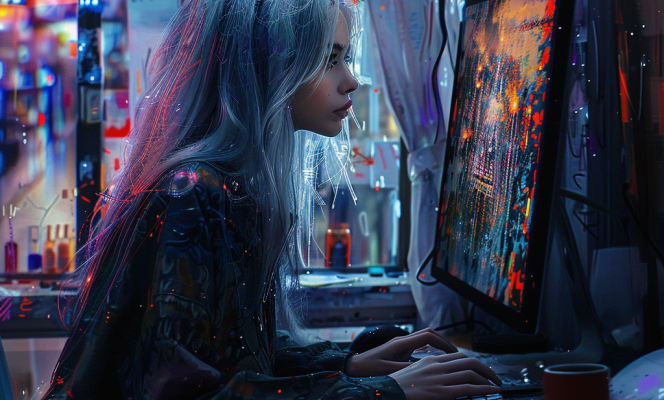Know the artificial intelligence we are addressing
Before even writing your “prompt” (the request which allows you to generate texts or images), you must first choose the artificial intelligence (AI) to which you wish to address. Each AI has its particularities and offers different results. Writing a prompt on Midjourney is not the same as writing a prompt on Leonardo, Runway or ChatGPT. If a sentence in our language works to send a request to ChatGPT, on Midjourney, it requires a series of words spaced by commas with sometimes hyphens and numbers to accentuate or diminish the effects of certain keywords, a bit like computer code. Certain AIs are therefore more accessible to the general public than others: “Leonardo has predefined styles, one functionality is reserved for manga, another for video games. On Midjourney, it’s more technical, it’s the user who defines the desired style by inserting keywords in their prompt. On the other hand, with Dall-e, if you have a subscription to Open AI, you don’t need to know how to prompt, you just have to give your original idea, and the AI will output a super prompt. explains Pierrick Chevallier, a graphic designer who provides training on the prompt.
Adapt to updates
Prompting in version 5.2 of Midjourney has nothing to do with what was required by version 3.0 of this AI. Over time, it has improved, and fewer words are needed to precisely formulate a request: “MidJourney has evolved a lot since I started in July 2023, today the structure of the prompt looks more like natural language, it becomes easier for users”says AI creator Ludovic Carli.
But if the prompt becomes simpler, other difficulties appear. You have to constantly adapt to updates: “I had created styles on the old V5.2 that no longer worked at all on V6, and so, now, I have to rework the prompt on this version. » With AI, you have to keep up with the pace of permanent evolution of the machine.
Work on your general artistic culture
Artificial intelligence relies on human databases, so having an in-depth general artistic culture allows you to better target the right keywords. Knowing certain artist names, certain photographic styles or certain artistic processes means speaking the same language as the machine and demonstrating a precision that will make the difference with the average creative person: “Someone who has artistic background and general knowledge will have enormous added value to succeed in generating a creation that they have in mind », underlines Pierrick Chevallier.
You have 36.16% of this article left to read. The rest is reserved for subscribers.
